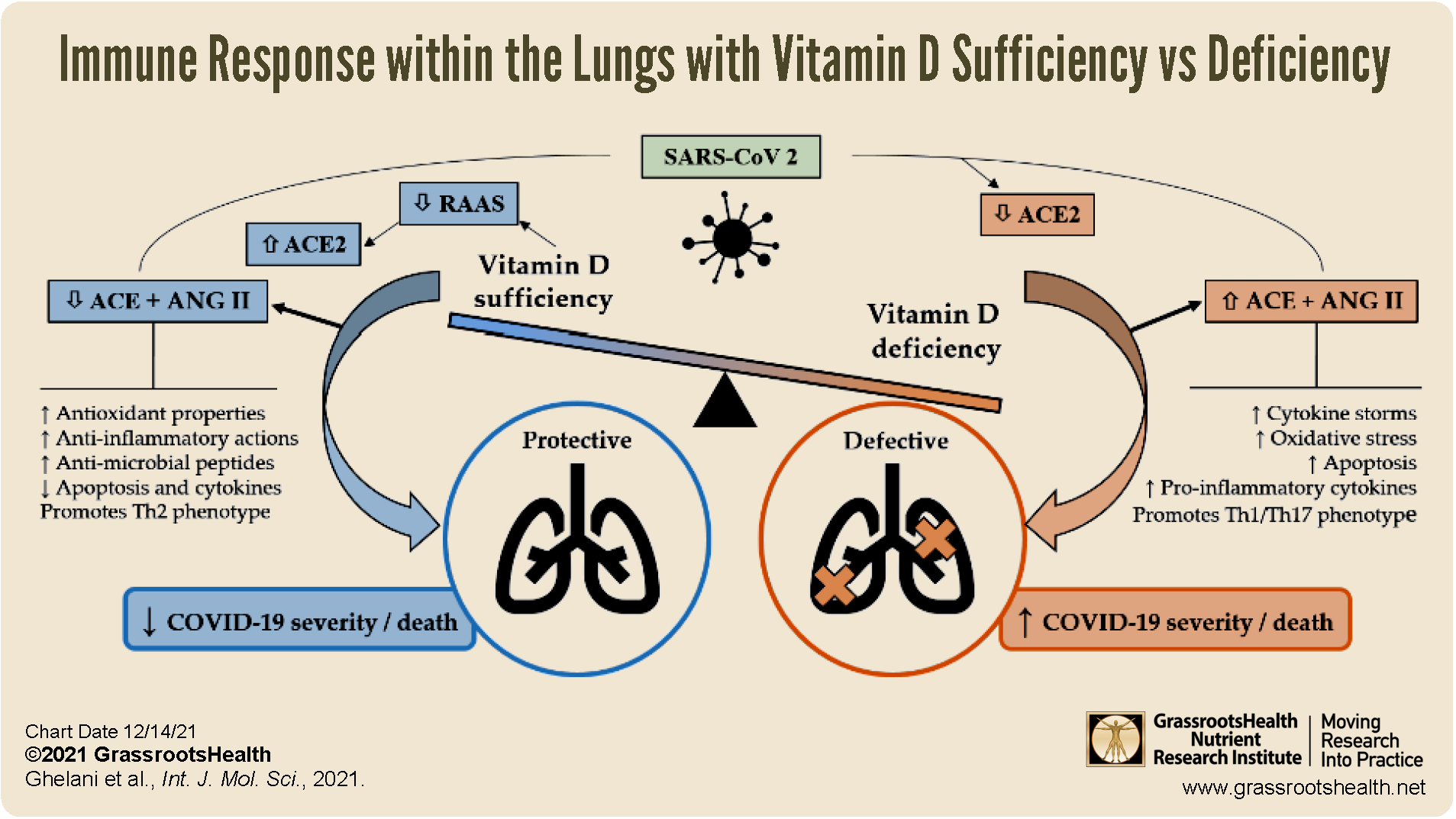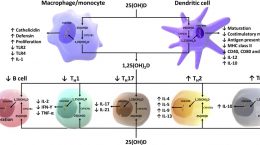Published on December 15, 2021
PLUS, the Vitamin D & COVID-19: A Summary of Published Research eBook is now available in its first version!
Key Points
- There is much evidence showing the significant effect that vitamin D status has on COVID-19 disease progression and outcomes, where higher vitamin D levels can reduce the risk of infection and severity and help prevent death
- Vitamin D plays roles within the immune response that are especially influential in fighting a SARS-CoV-2 (COVID-19) infection
- Share this knowledge easily with the new Vitamin D & COVID-19: A Summary of Published Research eBook, available now for purchase
How Vitamin D Works to Fight COVID-19
A number of studies, such as those included in our new eBook, have provided much evidence showing the significant effect that vitamin D status has on COVID-19 disease progression and outcomes, where higher vitamin D levels can reduce the risk of infection and severity and help prevent death. How does vitamin D work within the body to have such a protective effect?
The following diagram by Ghelani et al. is an excellent illustration of how the presence or absence of vitamin D could determine the overall effect a SARS-CoV-2 infection has within the lungs and on disease progression. As shown in blue, vitamin D sufficiency can help protect the lungs from acute injury due to infection from SARS-CoV-2, while vitamin D deficiency contributes to a defective immune response and increased disease severity and death, as illustrated in orange.
Vitamin D plays roles within the immune response that are especially influential in fighting a SARS-CoV-2 (COVID-19) infection
Infection begins when the SARS-CoV-2 virus enters the cells of the lung by binding the angiotensin-converting enzyme 2 (ACE-2) receptor, de-activating it and resulting in inflammation. This interrupts what is called the renin-angiotensin system (RAAS), a pathway responsible for regulating blood volume, fluid and electrolyte balance, and systemic vascular resistance.
When vitamin D is available in sufficient amounts, it is able to fulfill its roles to
- regulate the renin-angiotensin system (RAAS)
- increase ACE-2 expression, which leads to anti-inflammatory actions that help protect the lungs, keep inflammation levels down, and reduce the risk of cytokine storm
- prevent the toxic accumulation of the pro-inflammatory molecule angiotensin-II (ANG II) and angiotensin-converting enzyme (ACE)
- increase immune cells with antioxidant properties, anti-inflammatory actions, and anti-microbial peptides through its actions within the immune system
With additional research showing that
- vitamin D receptors are found in high concentrations in various immune cells that are vital to a successful immune response, especially dendritic cells, macrophages, T and B lymphocytes
- the enzyme that converts 25(OH)D3 into 1,25(OH)2D3 is present in high levels in macrophages and the epithelia of the respiratory system specifically
- and, vitamin D has been found to disrupt the function of 19 out of 27 (70%) SARS-CoV-2 proteins
It’s no wonder that “…low levels of vitamin D can result in dysfunction of crucial antimicrobial effects, potentially contributing to poor prognosis.”
Share this Information and Take Action!
Have you measured your vitamin D level yet? Are those you love aware of this information and of their own vitamin D level?
Share the opportunity to measure vitamin D levels from home as a participant in the vitamin D*action project, and share this important research with the eBook Vitamin D & COVID-19: A Summary of Published Research.
Thank you for your continued support and in sharing the research on vitamin D!
Vitamin D is an Easily Modifiable Factor to Help Improve Disease Outcomes – Check Your Level Today
 Having and maintaining healthy vitamin D levels and other nutrient levels can help improve your health now and for your future. Choose which to measure, such as your vitamin D, omega-3s, and essential minerals including magnesium and zinc, by creating your custom home test kit today. Take steps to improve the status of each of these measurements to benefit your overall health. You can also track your own intakes, symptoms and results to see what works best for YOU.
Having and maintaining healthy vitamin D levels and other nutrient levels can help improve your health now and for your future. Choose which to measure, such as your vitamin D, omega-3s, and essential minerals including magnesium and zinc, by creating your custom home test kit today. Take steps to improve the status of each of these measurements to benefit your overall health. You can also track your own intakes, symptoms and results to see what works best for YOU.
Enroll and test your levels today, learn what steps to take to improve your status of vitamin D (see below) and other nutrients and blood markers, and take action! By enrolling in the GrassrootsHealth projects, you are not only contributing valuable information to everyone, you are also gaining knowledge about how you could improve your own health through measuring and tracking your nutrient status, and educating yourself on how to improve it.


 Click to Enlarge & Print
Click to Enlarge & Print


